Reading Room Search
Go here for complete Reading Room Article Index
Displaying 276 - 300 of 607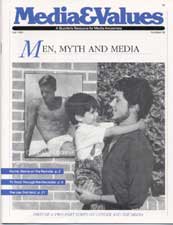
Muscles are in. Young men believe that to be a "real man" you have to project a strong, tough body image. Young women agree. After all, the athletic male body rippling with muscles is spread over nearly every magazine, billboard and sports page you look at. But in Canada, young men have become painfully aware of the price of this kind of manliness because of the tragedy of Ben Johnson.
Long before the runner won the gold medal for Canada at the 1988 Summer Olympics, he had been the hero of young people in Canada. Here was the perfect male stereotype – strong, silent, muscle-bound, athletic... Read More

Stereotypes and over-generalizations characterize the way young children think. In line with that tendency, children learn expected sex roles early and apply them liberally. They learn sex roles from many sources, but the media are among their prime teachers.
In order to challenge narrow sex-role images of men, watch TV with kids. Look at magazines together. Identify blatantly stereotypical representations of men. Make a "play" out of those messages, but change something. Make the man in the vignette a woman, or vice versa. The result will probably be humorous to the child, but the humor may... Read More
PASTORING: What Gender is God?
Exploring male images in media uncovers deeper questions about the nature of divinity and who can image God/the divine.
Recently, my local newspaper ran a review of a comedian's live show that focused on his male bravado and his rather brutal putdown of women. The reviewer noted that the audience, mostly young and male, enjoyed the jokes about sex-without-commitment and the attitude that women were there to be used.
I recalled this review while reading Mark Miller's essay on TV fathers in this issue. There was a thread of painful familiarity in his account of the continuing dominance of male power even if the external trappings had changed. While recognition of male power is important in analyzing media images... Read More

Peoples of all cultures have developed, over centuries, patterns and forms of communication that embrace specific values and have had an important socializing effect.
Such structured forms of traditional communication range from the proverb (often the repository of a people's accumulated wisdom) to children's games (unique examples of total communication), adults' plays (in which relationships are not only established, but also changed), jokes and riddles (as a respite from taking ourselves too seriously) and communal singing and music making (whereby sound envelops an entire group like a... Read More

I can't ignore the effect of media on local communications, institutions and even local cinemas here on Barbados.
When two youngsters are convicted for duplicating a murder they saw on television, it's frightening. And when events on Dallas or Days of Our Lives replace "How are you?" and "Have a nice day," you begin to wonder about interpersonal communication.
But all the same, innovative uses of technology can be used to vastly improve local education. When properly organized, television's effectiveness as a teacher cannot be denied. For example, the West Indies Distance Teaching Experiment... Read More

"A velvet silence calms the tropical night – a silence so profound that it can be felt. As the sea murmurs outside and f lowers perfume the air, the tense circles of exultant spectators wait in eager anticipation. Very soon they will learn the answer to a mystery that's been troubling them for a very long time. When the suspense is lifted, they'll know – Who Shot J.R."
When diverse representatives from the United States and Caribbean-based church groups met in the Caribbean late in 1983 to study local media they had shows like Dallas in the back of their minds. Like other developing... Read More
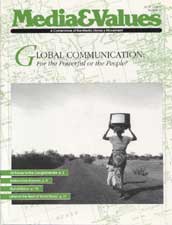
Another woman, who identified herself as a school teacher, said: "When TV came to my village I saw an immediate change. The kids lost all interest in the native language. They only wanted English. But worst of all is that storytelling has stopped cold. Storytelling used to be the main activity at night; all the kids sitting around the old people...
We'd ask our grandparents for the same stories night after night. We loved those stories and they were important. They taught us how to live here. But more than that they conveyed trust and love and admiration between the young and the... Read More
Why Study the Media? Thoughts from John Culkin
An early media education pioneer makes a case for teaching about media in schools. By John Culkin A medium is not simply an envelope that carries any letter. Each communications medium employs its own code and thus influences the content of the message communicated. Content never exists alone; it is always embedded in some medium. Full understanding, therefore, of any message necessarily involves a study of both the content and the form of the communication, or rather the content-in-form of the communication...
At their best, films communicate valid and significant human experiences which illuminate our common humanity and which we should want to share with our students. At their... Read More
Literacy in a Digital World (Book Review)
Book by Kathleen Tyner is First to Outline Media Literacy in U.S. Educational Context Book Review by Elizabeth Thoman
Flipping back through the pages of Kathleen Tyner's new book, Literacy in a Digital World: Teaching and Learning in the Age of Information, I am amazed at how many of the pages are filled with my underlining, marginal notes and stars marking significant paragraphs. Reading it was like engaging in a rich and fluent conversation with one of the U.S. media literacy movement's finest thinkers. I learned a lot from the hours I spent in her literary spell.
The book is really two books in one. The first half explores the history of literacy... Read More
The Media Education Elephant
This 1991 article outlined important issues inhibiting the widespread implementation of media literacy in US schooling. By Kathleen Tyner
The Rajah spoke, "The elephant is a big animal. Each man touched only one part. You must put all the parts together to find out what an elephant is like."
– from "The Blind Men and the Elephant," a folk tale from India.
Media educators in the United States are a fractious bunch. One teacher's definition of media education is another's heresy. Like the blind men and the elephant, teachers often practice one small aspect of media education and conclude that they have the whole picture. When the nature and quality of these media education efforts are scrutinized, they fall under one of... Read More
1996 National Media Literacy Conference / Los Angeles: Summary Report
From 31 states and 6 countries they came to LA to learn, to share, to network -- and to go back home inspired! "Media literacy in the U.S. will never be same," noted communications researcher George Gerbner told the assembled participants Sunday morning as the 1996 National Media Literacy Conference came to a close. Howard Rosenberg, media critic for the L.A. Times and panelist for the Sunday morning gathering, also offered an optimistic viewpoint of media literacy. "Having recently found out about media literacy, I'm a total convert. It offers tremendous possibilities," he said.
Indeed, the conference broke new ground as only the second gathering of teachers, leaders, academics, activists in the... Read More
http://www.mediastudies.rutgers.edu/mh_conference/index.html
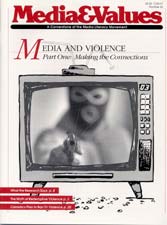
"Jolts per minute" programming is often cited as a principle — almost a first law — of commercial television. "Jolt" refers to the moment of excitement generated by a laugh, a violent act, a car chase, a quick film cut — any fast-paced episode that lures the viewer into the program. Television and screen writers often inject a jolt into their scripts to liven up the action or pick up the pace of a story.
Measuring the jolts per minute is a good way to discover how violence is used to keep the viewer's interest. When we consider the sheer number of violent acts we're exposed to... Read More
Muktuk and Mass Media
In the Alaskan expanse, communications media are reshaping the lives of the Inuit peoples. By Eric Gabster
Few experiences penetrate memory as thoroughly as Arctic winds pierce unprotected flesh. In Alaska, images of communication technology reshaping the lives of subsistence Inuit, or Eskimo, peoples can burn and numb like frostbite. During three years as a Jesuit Volunteer at KNOM-AM, an educationally based, public service radio station in Nome, Alaska, I had frequent opportunity to observe the metamorphosis of Inuit culture, and the role played in that shift by the instruments of mass communication. On journalistic expeditions to some of the 90 villages served by KNOM's signal I would fly... Read More

Editorial note: The following article is based on preliminary reports of research undertaken by communications expert Elihu Katz and doctoral candidate Tamar Liebes at the Hebrew University in Jerusalem. Since this article appeared in Media&Values, the authors published the full research study as: The Export of Meaning: Cross-Cultural Readings of 'Dallas' in 1990 (Oxford University Press.)
American television's ability to cross linguistic and cultural frontiers has long been taken for granted — so much so that scarcely any systematic research has been done to explain how and why... Read More
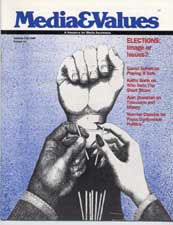
During the 1984 campaign I decided to do a very long piece on President Reagan for the evening news. It ran almost five and a half minutes. It was a piece that was the toughest I had ever done on Reagan, maybe one of the toughest ever done on him up to that point.
The thrust of it was that he wasn't telling the truth, that he was trying to create amnesia about his budget cuts, and about policies that had become unpopular. We showed him in front of a nursing home, where he was cutting a ribbon, and what he doesn't tell you is that he tried to cut the budget for nursing homes.
The next day, a... Read More
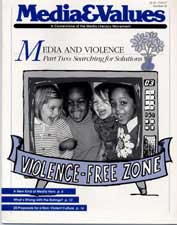
There was something suspicious about the spring 1993 Newsweek cover story glaringly headed "Violence Goes Mainstream" and subtitled, "Movies, Music, Books — Are There any Limits Left?" Here's a clue: After stating with predictable alarm that media violence, previously to be found (according to Newsweek) "on the fringes of mass culture," has now reached "the station-wagon set, bumper to bumper at the local Cinema 1-2-3-4-5," the writers go on to assign blame. Who done it? "The amalgamated, conglomerated media corporations" which irresponsibly and greedily "churn out increasingly vicious movies... Read More

Television has given a new, visual dimension to the ever-present racial subtext that runs like a thread through much of American politics. Although race has certainly been a sometimes unstated political issue throughout U.S. history, the tube has added a new dimension, constantly and inevitably reminding us of race without uttering a word. The unexpected success of Jesse Jackson with primary voters has brought this visual dimension into the open.
As a candidate, Jackson made many choices during his presidential campaign. But he was denied one option, the choice not to look black.
Richard... Read More

Our world is in travail. It takes no special sensitivity to realize how pervasive is the stress to which the fabric of our contemporary lives is subjected. Over and over again violence tears apart what, often, it has taken centuries to fashion.
And yet violence is not the substance, it is the symptom. Something new is waiting to be born. We are experiencing the birth pangs of a new age, of a new hope. We are present at that sacred moment when new life is about to emerge from the womb of the past...
The questions which address themselves to each of us are: Will we recognize the mystery of this... Read More
Landmarks in the Media Violence Debate: Decade by Decade
Key events in research, legislation and public awareness over 50 years.
1950s: Rise in youth crime and juvenile delinquency prompts congressional hearings on television violence.
June 1952
First congressional hearings on violence in radio and television and its impact on children and youth held by House Interstate and Foreign Commerce Subcommittee.
1954
Sen. Estes Kefauver, (D-Tenn), chairs hearings of Judiciary Subcommittee to Investigate Juvenile Delinquency on role of TV shows in youth crime. Networks say no link.
1960's: Urban violence prompts more congressional hearings and government funding of research on TV violence.
1967
University of Pennsylvania... Read More

TV has been teaching the American public since the 1940s. Movies, however, have been providing informal sex education since the turn of the century. But what have movies taught about minority teen relationships?
Seldom have movies seriously explored minority love. But they certainly have exploited minorities, particularly in the realm of interracial sex. Three minority teenage stock figures have become dominant in the Hollywood sexual pantheon.
Stock Figure One — The loose minority teenage girl.
This began with silent movies, when young Mexican and Indian women 'led for the favors of... Read More
Going for the Gold: The Golden Girls are a Hit!
But some viewers find them more brassy than sassy. By Mary Cassata and Barbara Irwin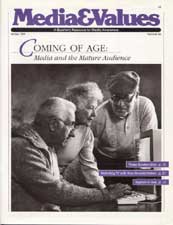
"I like this program because it gives me hope that there's life after 50!" –40-year-old woman "The Golden Girls is supposed to be about women who can get along without men – and all they do is talk about them." –40-year-old man
Only a few years ago, anyone pitching a prime time program around the unlikely concept of three aging females sharing a household in Miami would have been considered ripe for the great TV asylum in the sky. Despite the accelerating graying of America, the youth culture reigned. Asidefrom a few bright spots — Angela Lansbury of Murder, She Wrote among them,... Read More

Have you ever wished you had asked a grandparent or favorite aunt some questions about their unique experiences? Media now provide families with a variety of opportunities to capture the moment. In addition to written journals and photographs, audiocassette recorders and video cameras can preserve family stories and the treasured personas of loved ones. The immediacy of a grandparent or other relative's voice and/or image is special indeed. All family members can be involved in preparing an oral history. Gather two or more family members (the more the better) around a cassette recorder or... Read More

Rather than some relatively recent craze, stimulated by the arrival of satellites, television or even the newspaper, the good news is that the frenzied, obsessive exchange of news is one of the oldest human activities.
Messengers were appointed to bring word, criers to proclaim it and busybodies to spread the word. The need to know helped attract people to crossroads, campfires and market places; it helped motivate journeyers; it helps explain the reception accorded travelers. In most parts of the pre-literate world the first question asked of a traveler was, as it was in Outer Mongolia in... Read More

Jessica Fletcher (Angela Lansbury) is a TV character I can admire. A successful mystery writer who can be seen each week in Murder, She Wrote. Ms. Fletcher has warmth, wit and modesty. She sets her own schedule, and has a long list of loving friends and relatives whom she visits just when needed to solve a murder and leaves as soon as the case is solved.
Also she is unflappable and very smart. When young male police officers dismiss her as an old meddler — which they often do — she simply humors them and later gets even by solving the crime.
Television has extraordinary power to shape peoples... Read More

